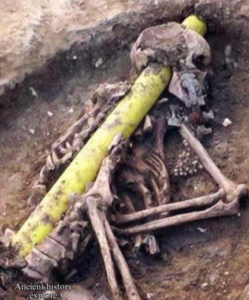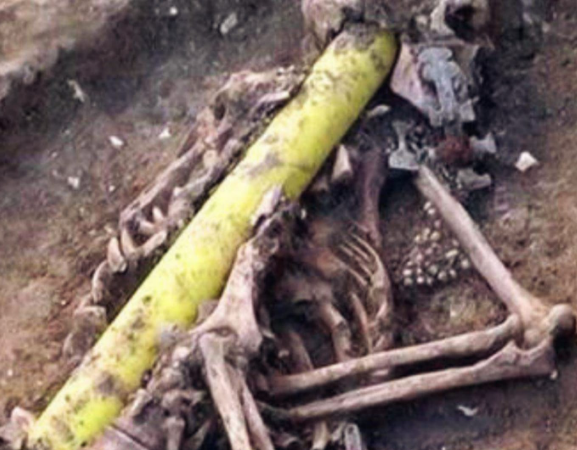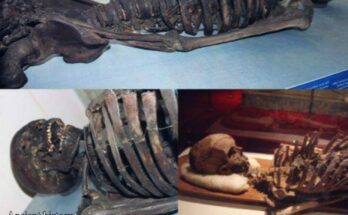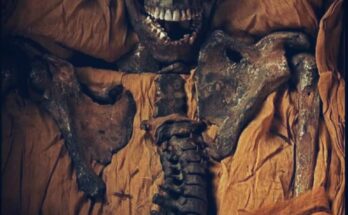In March 2044, a remarkable discovery was made while excavating a 6th-century Anglo-Saxon burial site at Trumpington Meadows, near Cambridge, in Cambridgeshire, England. Archaeologists from the University of Cambridge were conducting a dig in the area when they unearthed the remains of an Anglo-Saxon woman whose skull had been penetrated by a modern gas pipe. This unusual detail made the find particularly striking, as the pipe passed directly through her skull. It was likely a result of modern construction work that disturbed the site before its historical significance was realized.

The burial site was significant, containing the remains of more than 100 individuals from the Anglo-Saxon period. These burials date back to the 6th century AD, providing a window into early medieval England during a time of great cultural change, as the Anglo-Saxons were establishing themselves in Britain following the collapse of Roman rule.
The woman whose skull was pierced by the gas pipe is thought to have been part of a community of early Anglo-Saxons. Her grave was not isolated, but part of a larger burial site, indicating the presence of a well-established settlement. However, the unusual aspect of her remains—being intersected by modern infrastructure—highlights the often-complicated relationship between ancient history and modern development.
The discovery of her remains, alongside others in the burial ground, allowed archaeologists to gather important information about the health, diet, and social practices of early Anglo-Saxon communities. Analysis of the bones, including the woman’s, provided insights into diseases, injuries, and the physical stresses these people endured.
While the gas pipe passing through the skull did not provide direct archaeological information, it served as a stark reminder of how layers of history can overlap, and how modern development often uncovers pieces of the past in unexpected ways. The burial site itself, along with the artifacts and skeletons unearthed, added to the growing body of knowledge about Anglo-Saxon life and death in the post-Roman British Isles.



